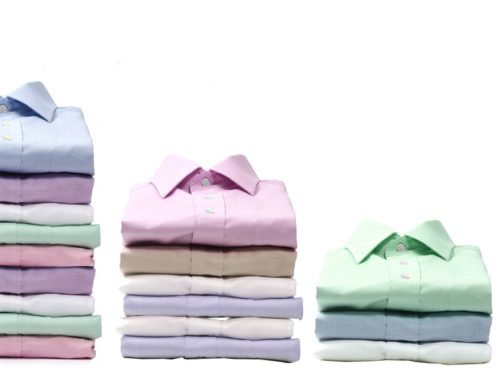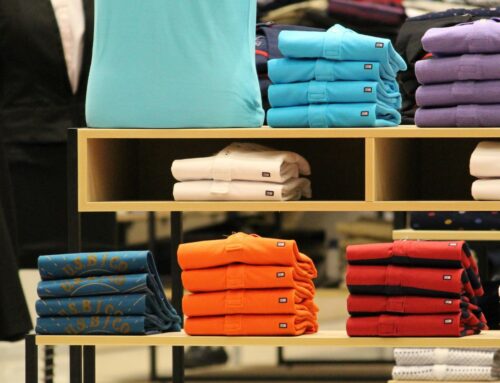In decades past, TV was pretty simple. Chances are you had an aerial that picked up three or four channels. You might be able to choose from NBC, CBS or ABC. TV Guide would tell you what was on, and millions of Americans would watch the same show at the same time.
But as barriers to entry came down, more players started to get into the TV business. Cable became popular, and cable channels started popping up. HBO launched, bringing movies into peoples’ homes for the first time. FOX launched to become the fourth national network. And suddenly, Americans had more choice than ever before.
The choice didn’t stop with cable and satellite TV. More cable networks launched. Specialty channels emerged, dedicated to news, sports, movies, comedies, dramas, and music. And streaming services came of age. Netflix became a necessity for most homes. Specialty channels like HBO and Showtime launched their own streaming services. Second generation services like Hulu and Amazon Prime Video popped up to compete with Netflix.
Today, the media landscape looks completely different than it did just a few years ago. Viewers have unprecedented choice to watch what they want, when they want it. The original three are still in play, and they still garner large audiences, but the audience is fragmented.
The retail industry should watch the media with a careful eye, because it’s undergoing a similar transformation. Gone are the days when customers had limited choice and visited a select few stores in droves. The barrier to entry has fallen to the point where teenage girls are setting up shop with little more than a few hundred dollars in startup capital and an Instagram account. Niche players are everywhere, and they’re carving out increasingly specialized segments. And the big, digital players are getting bigger and more dominant.
Through this transformation, retailers can also learn valuable lessons from the parallels happening in the media industry.
There’s room for everybody
The main TV networks didn’t go away when streaming services came to town. Despite competition, they still maintained a high quality product and used their brand power to remain relevant. Similarly, retailers are used to having competition and aren’t going to disappear just because new retailers are helping themselves to market share every day.
Consumer confidence is higher than it’s been in almost two decades, and the economy is doing well. There’s room for much of the competition that’s been introduced.
But that doesn’t mean incumbents can rest on their laurels.
In media, the main networks are evolving to meet the wants and needs of their audiences. They’re innovating in new spaces, such as by creating their own over-the-top streaming services, and creating original programming to support them. And they’ve gone to great lengths to secure exclusive rights to major events that play to their strengths, like the World Series and the Super Bowl.
Retailers can take a similar approach in order to compete.
Established media companies are meeting audiences where they want to engage. Similarly, retailers need to do more to give their customers what they want, where and how they want it.
Many retailers are already making great efforts to implement and improve omni-channel or unified commerce. But the customer touchpoint is only one-half of the equation. There’s an important product component that’s often overlooked.
See also: How To Buy Based On Customer Demand
On the product side, what retail lacks is a Netflix-style ability to create one version of a product and instantly replicate it across the world.
Instead, established retailers need to use their strength to forecast demand and make smart decisions about merchandising and allocation. Most major retailers have the data they need to play to the unique strengths of every customer touchpoint, whether they’re stores, e-commerce, or other digital channels. Improving this process, from the buy through to in-store, can help ensure customers find the products they want, where and when they want them.
New major players are here to stay
In the early days of media fragmentation, medium-sized players started popping up everywhere. There were (and still are) dozens of specialty cable channels. But a few companies quickly proved their business models and became major players in the media space. Netflix and Amazon are the kings, but traditional media companies are also competing for attention with platforms like Hulu, YouTube, and even Facebook.
It’s time for the retail industry to accept the fact that major digital disruptors are here to stay. Companies like Amazon, Alibaba, and Stitch Fix are already firmly entrenched as the giants of our generation. And history tells us that these e-commerce giants are only the first generation. There’s a second cohort of companies waiting in the wings to become even bigger, stronger, and more formidable than any competitor in existence today.
The question of how to compete with Amazon is raised constantly. But the answer may simply be that you can’t. TV networks, for example, aren’t trying to compete with Netflix to provide an always-available platform for unlimited on-demand viewing. Instead, they’re using their strength and assets to provide the kind of experience their competitors can’t rival. Live television events like sports and awards shows (and to some extent even local news) have become central to broadcasters’ strategies. They’ve found a way to re-invigorate “appointment viewing,” and it flies in the face of Netflix’s on-demand approach.
Traditional retailers have lots of assets Amazon doesn’t, and to compete they need to do a better job to leverage them. Traditional retailers have vast store networks, world-class designers, in-store product experts, and countless other abilities the major disruptors not only lack, but eschew. It’s time for retailers to see these as strengths, and use them to their advantage. Much like broadcasters reinvigorated appointment viewing, retail can reinvigorate store shopping. But it has to be on the customer’s terms.
Customers don’t care about you
Brand loyalty has been a problem in media since time immemorial. Think about the last time you sat down to watch something on TV. Did the source or network factor in your decision about what to watch? Or did you base your decision entirely on the show?
Just like your TV habits are bereft of brand loyalty, so are your customers’ shopping habits. They might make decisions based on larger trends (they know they’re likely to find stylish leggings at Lululemon the same way you know you’re likely to find an intense drama on HBO), but their goal isn’t to find a product at a particular store. Their goal is merely to find a product, and as long as their criteria are met (e.g. style, size, color, price), customers are less concerned about the vendor than ever before.
The media industry has worked to counter this by improving the quality of their offering, and focusing on exclusivity. Live events are one example. Another is HBO, who has worked to consistently develop programming that’s of world-class quality. Even Netflix has invested to produce thousands of hours of original content that can’t be found anywhere else.
In fashion retail, many labels and products have become commoditized. If a customer wants a particular Ralph Lauren shirt, they’ll buy it at the retailer offering it at the lowest price. Preferably with free shipping.
Many retailers have focused their efforts on improving the experiential value of stores, but left product as an afterthought. Phone chargers in fitting rooms and augmented reality mirrors are fine perks, but they don’t support the customer’s objective; the time spent in store is only a small fragment of the customer experience. What’s far more valuable to the customer is the time spent with the product after they’ve purchased it.
That’s why it’s of critical importance that your first priority as a retailer should be perfecting your product offering. Everything else can be replicated by any other business. The one thing that truly makes your brand unique is the product. No other retailer has just the same style, the same quality, the same assortment. Get it right, and customers will quickly learn to come to you first to find what they want. Get it wrong, and they’ll quickly learn not to bother.
It’s time to take action
From watching the media industry, we’ve learned that there is a place for traditional retailers now, and in the future.
However, just because it’s possible for traditional companies to thrive in the new era of retail doesn’t mean they deserve to. For most, it’s going to take a real commitment to embracing change and forward-thinking to thrive, or even survive.
But change for the sake of change rarely yields results. Strategies for change must revolve around the customer, and your product.
Traditional retailers must focus on their strengths, and use their strategic resources to win in areas where disruptors can’t and won’t compete. And they must do so in a way that meets the customer where they are, with the product they want.
Those who learn to put their customers’ needs first, and who truly understand what their customers need and want, are the ones who will succeed. The ones who can implement the right changes quickly are the ones who will thrive.





















